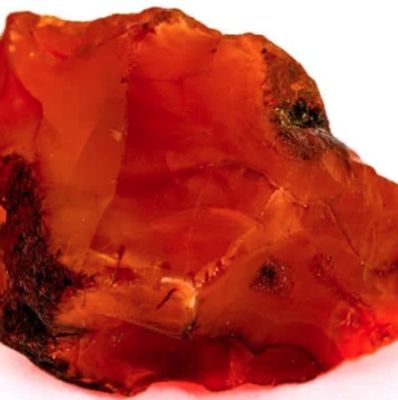Signed in as:
filler@godaddy.com
Signed in as:
filler@godaddy.com

• Keywords: Carnelian, creativity, courage, vitality, motivation
• Chakra: Sacral Chakra, Root Chakra
• Zodiac: Leo, Virgo
• Element: Fire
• Rarity: Common
Carnelian is a variety of chalcedony, a mineral in the quartz family. It ranges in color from pale orange to deep reddish-brown due to iron oxide impurities. The best-quality carnelian is found in Brazil, India, and Madagascar, but it is also sourced from Uruguay and the United States. The vibrant hues of carnelian make it a popular choice for jewelry and decorative objects.
Carnelian has a rich history dating back to ancient civilizations. In Ancient Egypt, it was used in jewelry and amulets, believed to protect the dead in their journey to the afterlife. Romans and Greeks used it in signet rings and seals because hot wax doesn't stick to carnelian. It was also considered a stone of courage by warriors going into battle.
To maintain carnelian's vibrant appearance, clean it regularly with warm, soapy water and a soft cloth. Avoid prolonged exposure to sunlight, as this can fade its color. Carnelian can be charged by placing it under the moonlight or on a bed of quartz crystals. Store it separately from harder gemstones to prevent scratching.
Carnelian is generally safe to handle, but it's essential to ensure it is not exposed to harsh chemicals that can damage its surface. As with all crystals, avoid ingesting carnelian or using it in elixirs without proper knowledge and preparation, as some minerals can release harmful substances.

Citrine is a variety of quartz that gets its warm golden to orange hues from trace amounts of iron. Natural citrine is relatively rare, forming when amethyst or smoky quartz is exposed to intense heat within the Earth. It ranges in color from pale yellow to a rich amber, with deeper hues often commanding a higher value.
Color Variations:
Major sources of citrine include Brazil, Madagascar, Russia, and Spain, though smaller deposits exist worldwide.
Natural citrine forms deep within the Earth under specific geological conditions, resulting in pale yellow to warm amber hues. In contrast, most citrine on the market is heat-treated amethyst. This process involves exposing purple amethyst to extreme temperatures, transforming its color into bright orange or deep gold. While both types carry citrine's metaphysical properties, purists often prefer natural citrine for its rarity and gentler, earthy energy.
Key Differences:
Pro Tip: To identify heat-treated citrine, look for a darker, more uniform color at the base and a striking orange hue that often signals its treated origin.
Citrine has been cherished for centuries, often called the “Merchant’s Stone” for its reputation in attracting prosperity. It was popular in ancient Greece for carving talismans and gained widespread appeal during the Art Deco period, often used in statement jewelry.
Citrine is generally safe for handling and wearing. However, avoid exposing it to prolonged direct sunlight, as this may fade its color.
Note: This information is not intended as medical advice. For any health concerns, please consult a qualified healthcare professional.
Lotus Flame
We use cookies to analyze website traffic and optimize your website experience. By accepting our use of cookies, your data will be aggregated with all other user data.